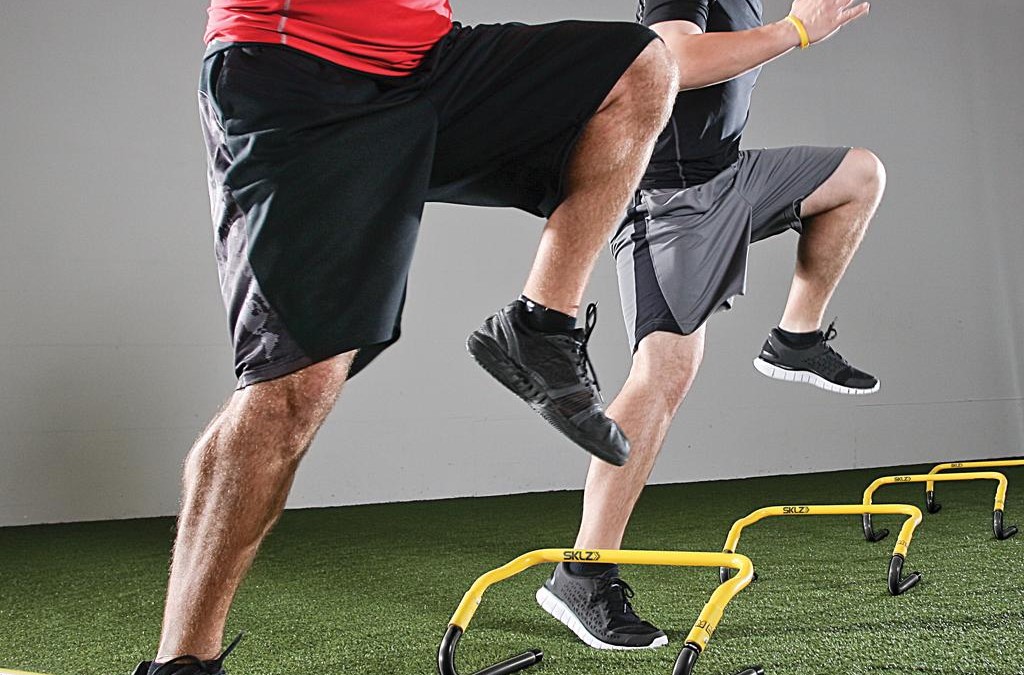By Fabio Comana, MA, MS, NASM-CPT, CES, PES, NASM Faculty Instructor
Although agility drills should always emphasize good body alignment, movement mechanics and efficiency, don’t forget that a little creativity and fun can add an experiential element to your training programs. Whether conducting open-skilled (reactive) drills or closed-skill (pre-determined) drills, give some thought to some simple ideas to add a fun element, especially when working with groups.
As a quick sidebar, closed-skill drills are those where the coach selects a drill, then provides all the necessary instruction to control both the movement patterns and intensity beforehand to emphasize motor skill development and technique. Open-skilled drills are those where the coach selects a drill and individuals are required to respond to various stimuli (e.g., visual or verbal cues) that are provided throughout the drill. This format more closely mimics true athletic performance, increases work intensity and taxes the energy systems. Generally, all drills should prioritize movement patterns in the sagittal plane before systematically progressing (based upon volume or mastery) into the frontal and transverse planes, en route to more multi-directional movements.
Here is an example of a simple, inexpensive and progressive open-skilled drill that incorporates visual and verbal cues into multiple planes of movement. You’ll need to know your audience’s skill sets and select the appropriate movement intensity (e.g., walking, shuffling, moderate or intense pace) and appropriate complexity of verbal-visual cues:
- Verbal – select from a menu starting with simple instructions like ‘forwards’ / ‘backwards’ or number designations (e.g., odd = move forward; even = move backward) to more complex math skills incorporating coordination between cognitive processing and motor skills (e.g., 3×2 = ?; 4-1 = ?) using the odd and even answer to designate movement direction.
- Visual – select from a menu starting with simple instructions like pointing left and right to number designations (e.g., odd number of fingers = move forward; even number of fingers = move backward).
- Combination – coach calls out either ‘verbal’ or ‘visual’ to cue the appropriate stimulus, then follows by offering both a relevant and irrelevant cue that requires individuals to choose the appropriate cue and process a response. For example, the coach may call out ‘verbal’ then offer a visual cue (e.g., 3 fingers) and a verbal (e.g., ‘4 minus 2’) cue simultaneously, requiring the individual to select the verbal cue, process the information, and react appropriately (e.g., 4 – 2 = 2 – therefore move forward).
Stage One: Sagittal Plane Reactivity and Agility:
- Start simple and gradually build movement intensity and the complexity of cues as individuals demonstrate mastery.
- Movements need only be performed in each direction for 1 – 2 seconds before the next cue is presented. Gamify the drill by challenging the group to achieve a certain number of correct responses (e.g., 10 correct responses in row) or continue for an allotted time without making mistakes (e.g., beating 20 seconds).
- For an added twist, place paper plates or agility dots all over the floor, instructing the individuals to avoid stepping on them at all times. This helps develop spatial awareness while attending to the verbal-visual stimuli, much like an athlete needs during their sport when they need to be aware of the sidelines, off-side markers, etc. Cones may also be used for when the individual needs to navigate themselves around the obstacles.
Stage Two: Introduce Frontal Plane Reactivity and Agility
- Repeat same process, but now move between left and right.
Stage Three: Combine Sagittal and Frontal Plane Reactivity and Agility:
- Use numbers for movement in one plane and add other cues for the second plane. For example, if odd numbers represent left and even numbers represent right, then add light colors to move forward and dark colors to move backwards; or for kids, land mammals to move forward and sea creatures to move backwards.
- This can also become confusing for the coach, a suggestion is to pre-script the cues and read them off in whatever order desired.
- Consider the addition of the floor obstacles.
Stage Four: Introduce Transverse Plane Reactivity and Agility:
- Repeat same process as Stage One, but rear or front rotate to the left and right.
Stage Five: Combine Transverse Plane with Another Plane:
Stage Six: Combine all Three Planes:
- Select three distinct sets of cues to designate the movement directions (e.g., number for the sagittal plane, colors for the frontal plane, and European/American nations for the transverse plane).
Although this drill progressively builds in complexity, always keep in mind that too complicated sometimes results in a drill losing some of its luster.

